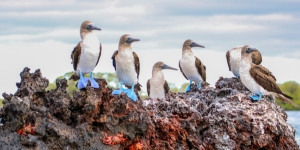Hummingbirds are a specialty of the Americas, with all the world’s species occurring somewhere between southern Alaska and Patagonia. There are 363 species, nearly enough for a hummingbird-a-day calendar. Choosing two to duplicate would be a daunting task.
That year’s worth of hummingbird species is not evenly distributed throughout North and South America. Just a few species brave the temperate regions of Canada, the United States, Chile, and Argentina, with hummingbird diversity ramping up significantly in the tropics. That may seem perfectly logical, but even in those warmer climes, not all locales are created equal.
There is a clear winner among the world’s hummingbird hotspots, and it’s the montane habitats of the Andes from Venezuela to Bolivia. The small country of Ecuador by itself — centred around the mountains — hosts 131 species, well over a third of the global total. The map below from BiodiversityMapping.org illustrates the degree of the hummingbirds’ affinity for the Andes.
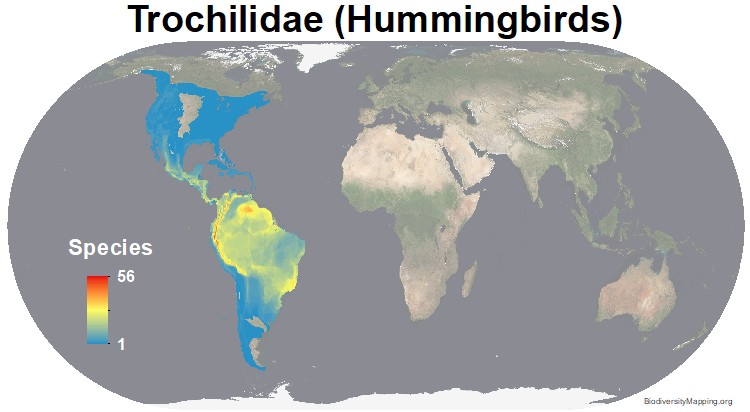
Map from BiodversityMapping.org based on data contributed by BirdLife International, IUCN, NatureServe, and USGS.
Not just about quantity, the Andean Mountains are also home to some of the most spectacular and unusual hummers in the world. Species like the Sword-billed Hummingbird, Giant Hummingbird, Shining Sunbeam, Rainbow-bearded Thornbill, Great Sapphirewing, the sylphs, the trainbearers, the racket-tails, and many more abound in the peaks and valleys of South America’s grandest range. Hummingbirds in the global north and south, by contrast, tend to be small, short-billed, and less extreme in their form.
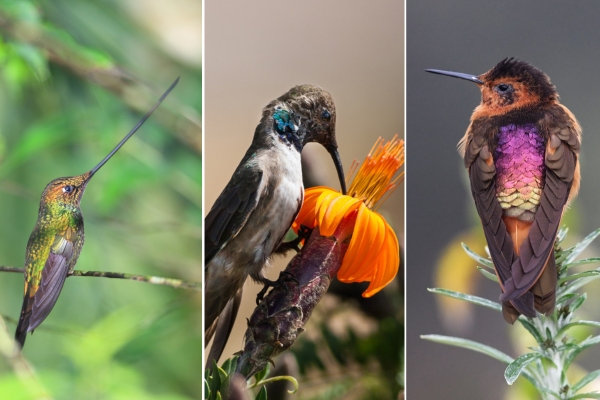
Sword-billed Hummingbird (left), Giant Hummingbird (centre), Shining Sunbeam (right)
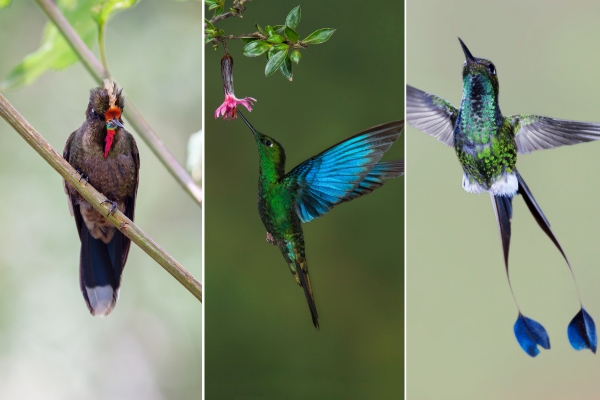
Rainbow-bearded Thornbill (left), Great Sapphirewing (centre), Booted Racket-tail (right)
What is it about this narrow band of habitat that fosters such diversity and eccentricity in this particular group of birds? To answer that question we need to go back - — way back - — to when the Andes were in their infancy.
The Andes are a mountain range formed by subduction, where two tectonic plates come together and one is pushed down into the earth’s mantle. The continuous collision of the plates over millions of years causes the Earth’s crust to buckle and fold, generating the uplift of mountains. For the Andes, this process began hundreds of millions of years ago, and is still happening today.

Plate tectonics diagram — showing convergence of an oceanic plate and a continental plate.
The Andes have gained a significant amount of their elevation in only the last 30 million years, and this dramatic change in the landscape produced new habitats for hummingbirds to colonize. They did exactly that, and as the mountains rose, the habitats became more varied. As the hummingbirds adapted to their new homes, they became specialized to their local climate and flora, and increasingly unable to traverse growing barriers like ridges and valleys.
This isolation and specialization were the perfect forces to drive the diversification of the hummingbirds. The Andes of today are a dense mosaic of varied habitats defined by their elevation, latitude, sun exposure, microclimate, and weather patterns. These habitats are often separated from each other by geological or climatic barriers, creating countless disparate niches in which species can evolve and differentiate. The hummingbirds have taken full advantage.
Varied topography is not the only criteria for hummingbird abundance, though. If it were, we might see similar explosions in the southern Andes, or the Rocky Mountains. There is another necessary piece to the puzzle, and that piece is food.
Research suggests that the single biggest determinant of hummingbird diversity is having a consistent and abundant source of nectar throughout the year. The milder climate and constant humidity of mountain forests in the tropics provide the perfect environment for this, with no dry or cold season for plants to struggle through. Flowers are always open, so hummingbirds are spoiled for choice.
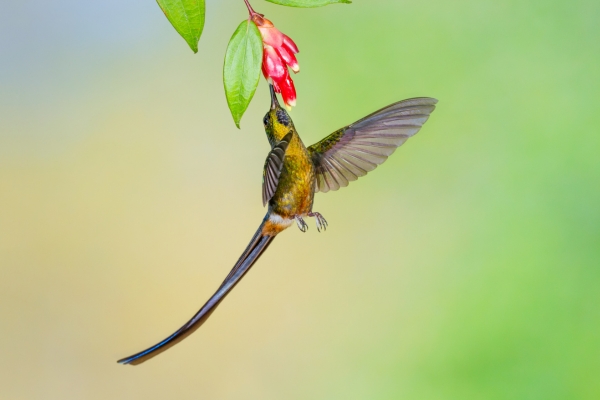
A male Violet-tailed Sylph feeding on a flower.
This year-round buffet supports hummingbirds ranging from very tiny to surprisingly large. Some have evolved long or unusually shaped bills to optimize feeding on particular flowers, often those with the richest nectar rewards. A steady food source also means there’s lots of energy available to devote to growing elaborate feather adornments with which to perform the ever-crucial task of attracting a mate.
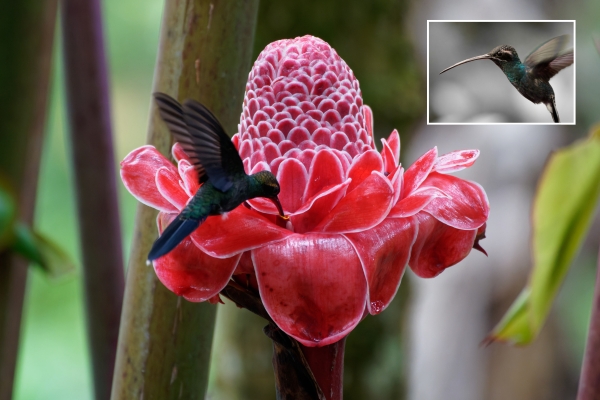
The white-whiskered hermit has a long, slightly curved beak, well-adapted for accessing nectar from tubular flowers.
At more temperate latitudes, fewer flowering plants support fewer hummingbirds. In addition, the hummers that live there must be more flexible. Small bodies require less nectar to support them, and shorter, simpler bills are well equipped for feeding from whatever flowers are available throughout the year. Less energy spent growing gaudy feathers means more energy devoted to gathering food or migrating when the seasons change.
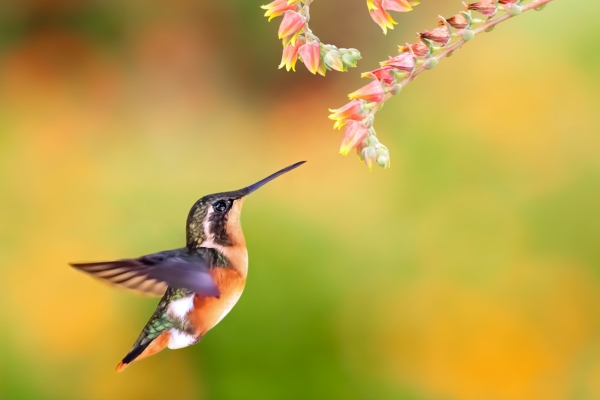
The smallest hummingbird species found in Ecuador is the Short-tailed Woodstar.
For all these reasons, the tropical Andes truly are the best place in the world to encounter the diversity of hummingbirds. Whether you’re drawn to metaltails, velvetbreasts, coronets, woodstars, or brilliants, these alluring mountains harbour an experience like no other. It’s almost as if they were designed in a lab to be the ultimate hummingbird hotspot, a perfect haven for one of the most popular families of birds in the world.
Spots these hummingbirds and more on our Ecuador Highlands tour with Ontario Nature. View more tour details here | Feb 22 - Mar 05, 2026.
Booked a Galapagos Islands expedition with us? Go on a Ecuador’s Andean Highlands and Cloud Forest Birds post-trip extension to encounter these stunning hummingbirds. Please get in touch for more details.



